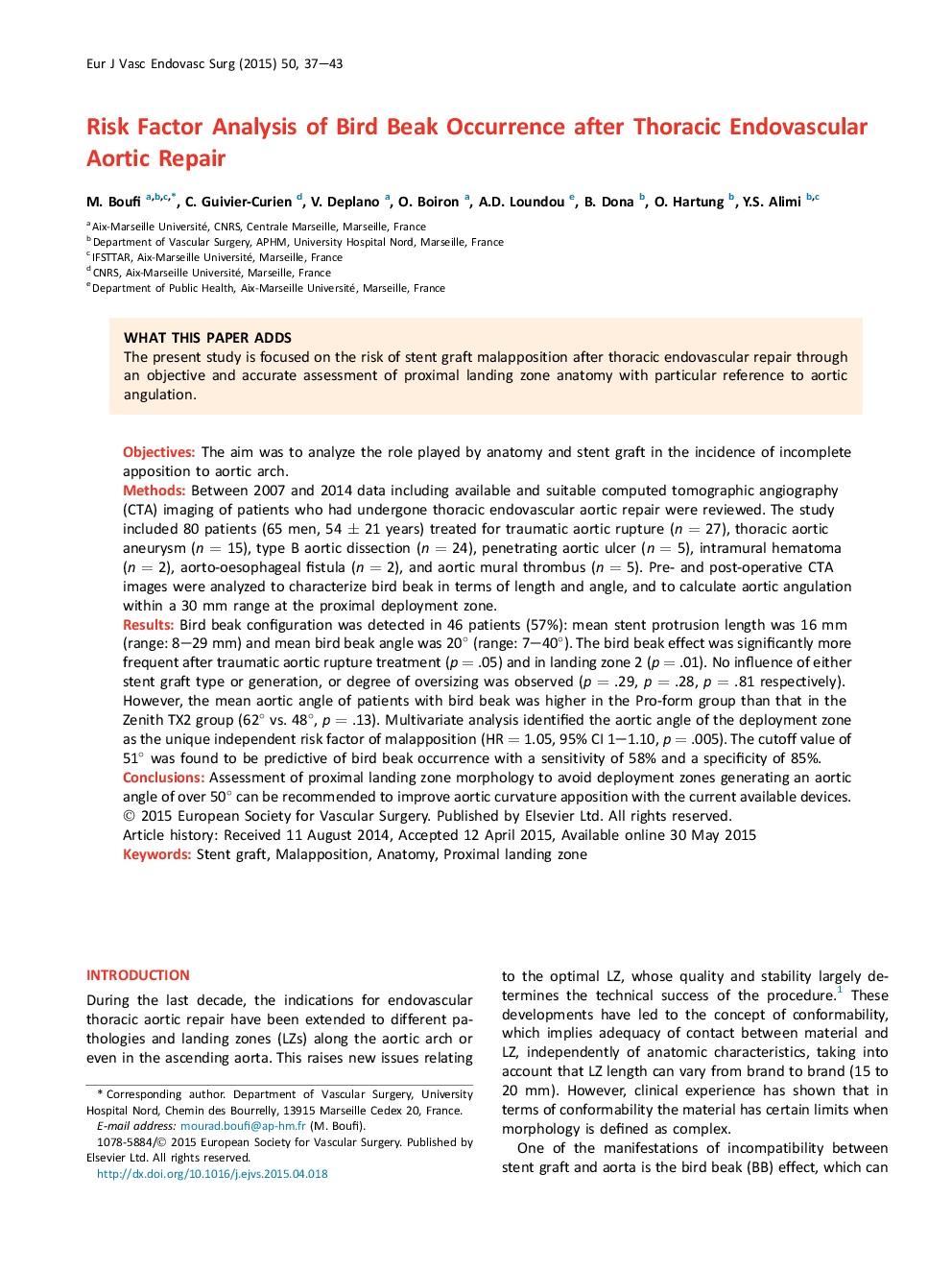| کد مقاله | کد نشریه | سال انتشار | مقاله انگلیسی | نسخه تمام متن |
|---|---|---|---|---|
| 2911881 | 1575440 | 2015 | 7 صفحه PDF | دانلود رایگان |
ObjectivesThe aim was to analyze the role played by anatomy and stent graft in the incidence of incomplete apposition to aortic arch.MethodsBetween 2007 and 2014 data including available and suitable computed tomographic angiography (CTA) imaging of patients who had undergone thoracic endovascular aortic repair were reviewed. The study included 80 patients (65 men, 54 ± 21 years) treated for traumatic aortic rupture (n = 27), thoracic aortic aneurysm (n = 15), type B aortic dissection (n = 24), penetrating aortic ulcer (n = 5), intramural hematoma (n = 2), aorto-oesophageal fistula (n = 2), and aortic mural thrombus (n = 5). Pre- and post-operative CTA images were analyzed to characterize bird beak in terms of length and angle, and to calculate aortic angulation within a 30 mm range at the proximal deployment zone.ResultsBird beak configuration was detected in 46 patients (57%): mean stent protrusion length was 16 mm (range: 8–29 mm) and mean bird beak angle was 20° (range: 7–40°). The bird beak effect was significantly more frequent after traumatic aortic rupture treatment (p = .05) and in landing zone 2 (p = .01). No influence of either stent graft type or generation, or degree of oversizing was observed (p = .29, p = .28, p = .81 respectively). However, the mean aortic angle of patients with bird beak was higher in the Pro-form group than that in the Zenith TX2 group (62° vs. 48°, p = .13). Multivariate analysis identified the aortic angle of the deployment zone as the unique independent risk factor of malapposition (HR = 1.05, 95% CI 1–1.10, p = .005). The cutoff value of 51° was found to be predictive of bird beak occurrence with a sensitivity of 58% and a specificity of 85%.ConclusionsAssessment of proximal landing zone morphology to avoid deployment zones generating an aortic angle of over 50° can be recommended to improve aortic curvature apposition with the current available devices.
Journal: European Journal of Vascular and Endovascular Surgery - Volume 50, Issue 1, July 2015, Pages 37–43
